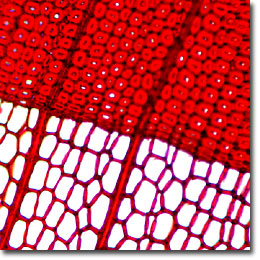The Tamarack
The Tamarack (Larix laricina; also known as the Eastern Larch) is softwood tree found primarily in the northern states where it grows mainly east of the Rockies and in a few isolated groups of trees in Neckako Valley. The sapwood is very white in color and narrow, while the heartwood ranges from yellowish to russet brown with occasional red hues.

Cross Section

Radial Section

Tangential Section
Tamarack is a member of the Pinaceae pine family, and around 10 species of these deciduous trees have been cataloged. All larches are valuable timber trees and are widely grown as ornamentals for their attractive foliage and shape. The trees sport a cone-shaped head with horizontal branches and needle-shaped leaves that drop in the fall season. Larch pines require a substantial amount of sunlight, moist acidic soil, and plenty of room. The huge size of most larch trees renders them susceptible to a number of insect pests and diseases.
In the days of wooden sailing ships, tamarack roots were often used to join the ribs to the deck timbers. Tamarack wood is used for rough construction, posts, poles, ties, novelties, boxes, crates, pallets, and pulpwood.
Microscopic examination of iron-alum hematoxylin and safranin stained thin sections (see the digital images presented above) reveals an abrupt transition from spring to summer wood, with the spring wood occupying most of the ring. Tracheids average 28 to 35 micrometers in diameter and bordered pits occur in one to two rows on the radial walls. Longitudinal parenchyma is marginal and very sparse, or lacking. Like many softwoods, the rays are uniseriate (or rarely biseriate) and fusiform. Resin canals have thick-walled epithelium and occasionally with tylosoids in the heartwood.